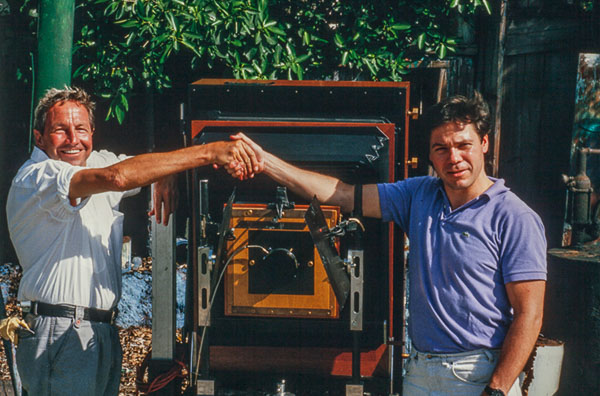In 1987 Polaroid sent John Reuter and the 20×24 camera to Miami to work with renowned multi-media artist Robert Rauschenberg. Rauschenberg had used photography extensively as collage material in his own paintings but was not known as a photographer. Rauschenberg had many ideas for location shoot images and at a pre-shoot dinner he described to Reuter what kind of situations he would like to put the camera in. Reuter would diplomatically counter with the physical restrictions and limitations of the 235 pound camera in outdoor location scenarios. After the fourth or fifth qualification from Reuter, Rauschenberg proclaimed in exasperation “why, it sounds like this camera is made out of string and cardboard!” ” Not quite”, Reuter replied and the next few days the camera travelled the streets of Miami capturing the grit and strange beauty as only Rauschenberg could see it. As they were working Reuter described a film he did not bring to Miami as it was not requested. That film was Polapan 400, a Type 52 equivalent that required a print coater and so was not suitable for outdoor location work. Reuter told Rauschenberg how this film had to have the coater painted on with a foam paint brush or the silver would bleach away. Rauschenberg immediately got the idea to partially apply coater to the image and allow the bleaching process to alter the image. They would meet again in the New York studio in 1988 and Rauschenberg brought many of his favorite black and white images to re-photograph. They decided to make some single panel enlargements and some much bigger multi panel enlargements. Rauschenberg applied the coater solution to the images in the studio in a unique Rauschenbergian way. The images were sent to his studio in Captiva, Florida and subjected to all of the elements Rauschenberg could throw at them, sun, brushes, bleach, and high pressure water. At the end of the process the images were mounted on steel panels. These images were shown recently at an exhibit at Pace MacGill gallery in New York and can be seen in a book on Rauschenberg’s art by Phaidon.






















